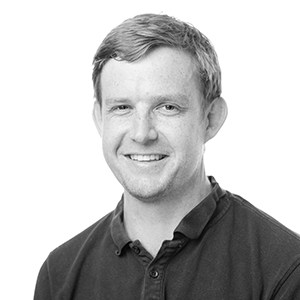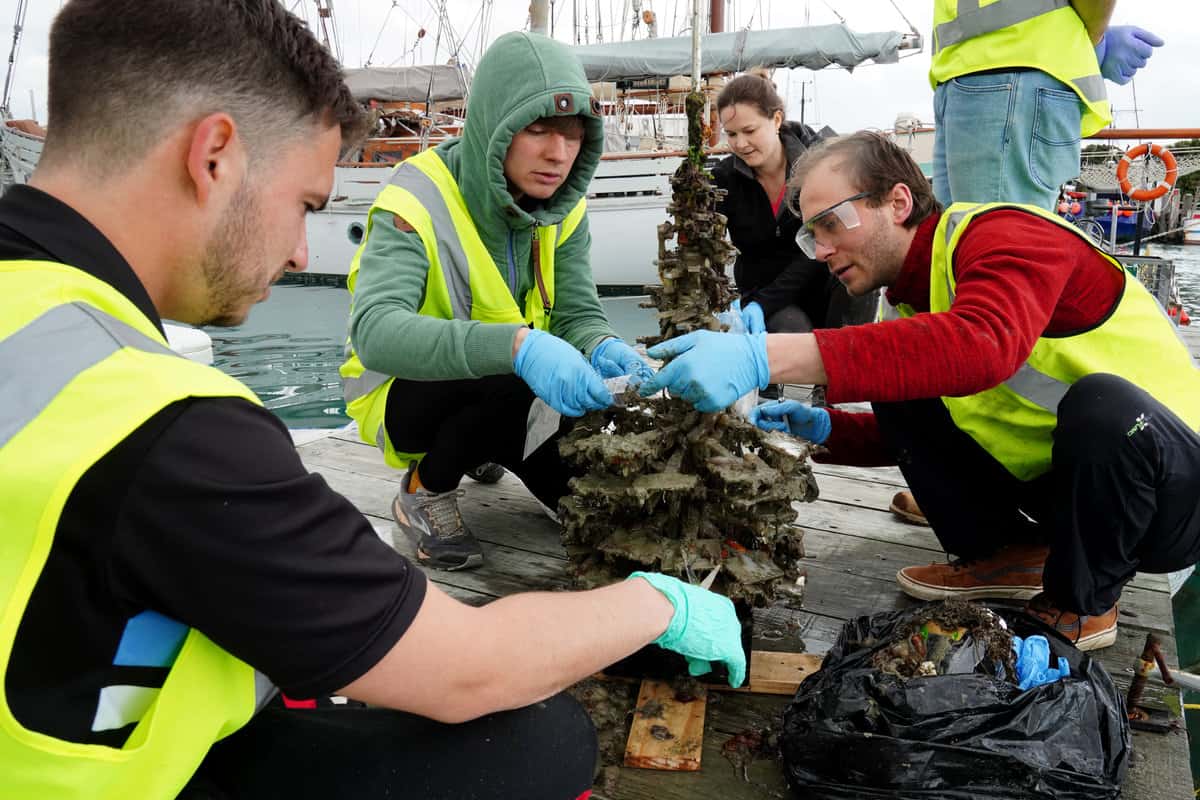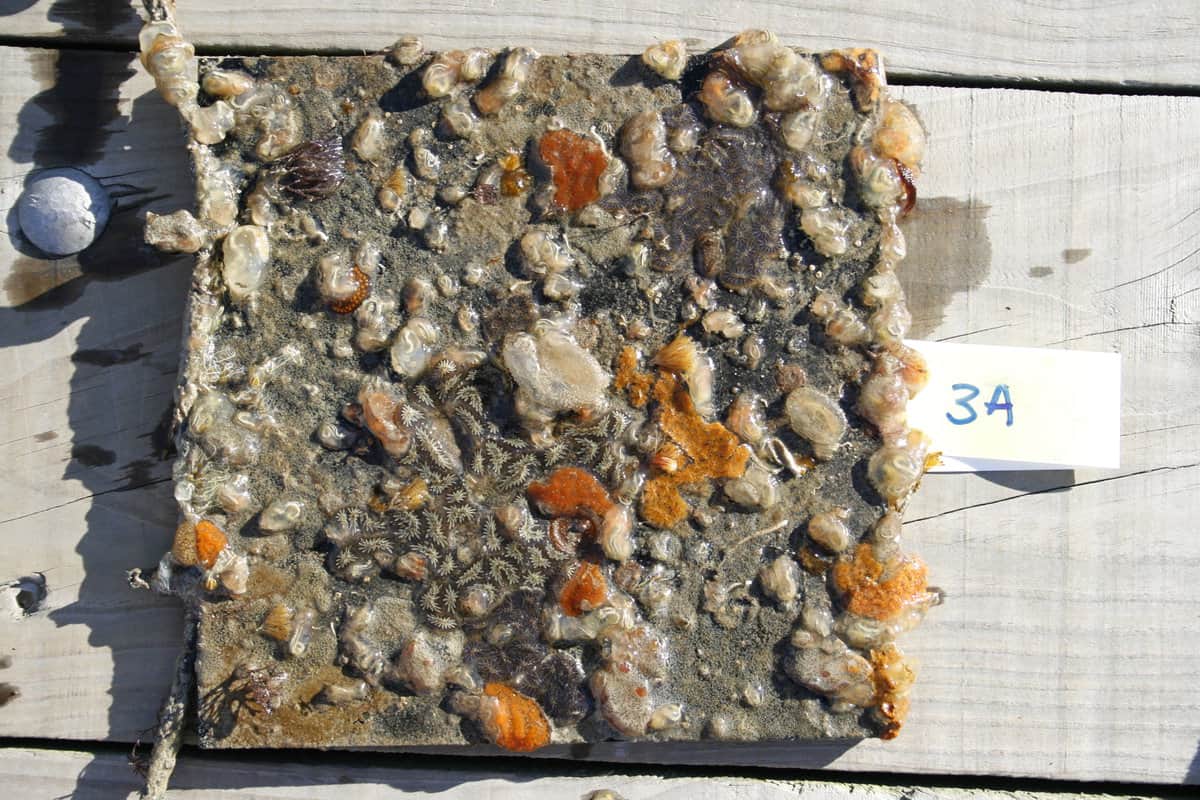Opinion – Bioactive compounds could produce revolutionary new antifouling technologies
by Dr Patrick Cahill and Associate Professor Johan Svenson
07 September 2021
Cawthron Institute, based in Nelson, is New Zealand’s largest independent science institute, and our research spans a wide range of disciplines and environments. A common thread in much of what we do is the ocean – how do we understand, protect, and utilise the ocean and its enormous potential.
Johan is a chemist focused on identifying and understanding marine bioactive compounds and figuring out how they can be utilised in products and technological solutions. Patrick is a marine ecologist focused on finding ways to prevent and manage marine biosecurity issues related to biofouling and other marine pests including the development of antifouling technologies. While we each have different areas of expertise, there are many connections between our work, and we share a common interest in developing better technologies to control biofouling.
Biofouling is the accumulation of microorganisms, plants, and other marine creatures (for example barnacles) on surfaces in the sea. When biofouling occurs on manmade structures like ship hulls, aquaculture equipment, or pontoons and jetties it causes major problems because it degrades the surfaces and increases drag. The increased drag from biofouling significantly increases carbon emissions from the international shipping fleet, representing a notable contributor to climate change. Biofouling also represents a biosecurity threat because it allows invasive species to establish and spread within the marine environment.
‘Antifouling’ coatings are the traditional mainstay approach to controlling biofouling. They are typically broad spectrum – this means they kill a range of unwanted organisms but can also cause collateral damage by killing other harmless organisms in the process. Some are also persistent, meaning they linger in the environment for some time. Although effective, these kinds of antifouling coatings can themselves generate unacceptable environmental damage – many have been banned and there is mounting scrutiny on the remaining options. The need for improved antifouling technologies is urgent and globally important.

Dr Johan Svenson – Science Leader for algae and bioactives research

Dr Patrick Cahill – Marine ecologist and Team Leader for biosecurity research
Developing better antifouling technologies is an enormous challenge, and one that requires cross-disciplinary collaborations such as ours. In 2014, after meeting at the International Conference for Marine Corrosion and Fouling in Singapore, we realised that combining our different expertise could allow us to explore the potential of marine bioactive compounds as an effective yet safe antifouling biocides.
Compared to most pest control scenarios (think insect and pest control for horticultural crops), biofouling is particularly challenging because antifouling solutions need to be both broad-spectrum, to manage the huge diversity of biofoulers, and environmentally safe, to avoid harm to sea life. These two requirements are often contradictory, and meeting both sets the scientific challenge for our work. To meet the challenge, we have founded a hub for marine antifouling R&D at Cawthron combining ecology and chemistry along with a network of leading international collaborators, including Dist. Prof. Margaret Brimble DNZM, FRS (University of Auckland), Prof. Claire Hellio (University of Brest, France), Prof. Henrik Pavia (University of Gothenburg, Sweden), Prof Kristina Specic (University of Ljubljana, Slovenia), Dr Lindon Moodie (Uppsala University, Sweden), and Dr Mattias Berglin (RISE, Sweden).
We have established a suite of high-throughput biological assays, which are essentially a range of methods for screening for biofouling and measuring and testing the impact of antifouling activity. The assays are a powerful tool when combined with our chemistry expertise, which at Cawthron includes leading natural products isolation that has enabled us to identify and prove a range of unique antifouling bioactives from marine flora and fauna. We are looking at some of the protective features those marine organisms have naturally evolved to prevent being overgrown. These defences include repelling topographies (a surface that is difficult to attach to) and an ability to produce slime and cocktails of repelling defensive compounds that prevent other organisms from attaching to them. In the lab, we are creating synthetic versions of those compounds to gain a deeper understanding of how they work and enable large-scale production in the future.
We are particularly excited about the potential of our work to develop a class of marine cyclic peptides (peptides are chains of amino acids) that prevent biofouling on surfaces but breakdown to harmless amino acids in the marine environment. In collaboration with Dame Margaret Brimble FRS, we have synthetically optimised a class of peptide with unusually broad-spectrum antifouling activity and potential to ‘tune’ selectivity toward problem biofoulers. We are also involved in projects that are developing new nano surface treatments that prevent fouling, new materials for use underwater that repel organisms looking for a place to settle, and even disruption using bubble streams. These approaches offer huge promise for better antifouling technologies, and we are also developing overarching frameworks to direct when and how to apply the toolbox of approaches for best effect.
Combined, these tools and technologies have the potential to make a big difference to the success of antifouling efforts in marine environments, creating efficiencies for blue economy industries and protecting New Zealand’s coastal regions from invasive marine pests.
In addition to creating promising new antifouling technologies, our projects are providing fundamental new insights into the interplay between efficacy and selectivity. Ultimately, we are working toward redefining the concept of ‘biocides’ in the context of marine antifouling but also more broadly. We are forming a revolutionary new concept of ‘bioselectants’, aiming to replace indiscriminate biocides with new, highly-selective technologies. Non-persistent bioselectants have the potential to help us control problematic microorganisms without limited harm to beneficial microbiomes. This approach could improve outcomes across primary production, manufacturing, food, healthcare, consumer, and environmental sectors worldwide.
Ass. Prof. Johan Svenson has been Science Leader of algal & bioactives research at Cawthron Institute since 2019. His research background includes a wealth of international experience, including a decade in northern Norway working on Arctic marine bioprospecting and 15 years leading the development of bioactive peptides inspired by natural compounds.
Dr Patrick Cahill is a Research Scientist and Marine Biosecurity Team Leader at Cawthron. He has specialist technical expertise in marine pest control, including unique capabilities for biological development and assessment of marine antifouling technologies.
Together, Johan and Patrick have published three joint research papers on novel natural antifoulants and several more are under development.

Image: Cawthron Institute. Researchers conducting biofouling experiment at Port Nelson.
